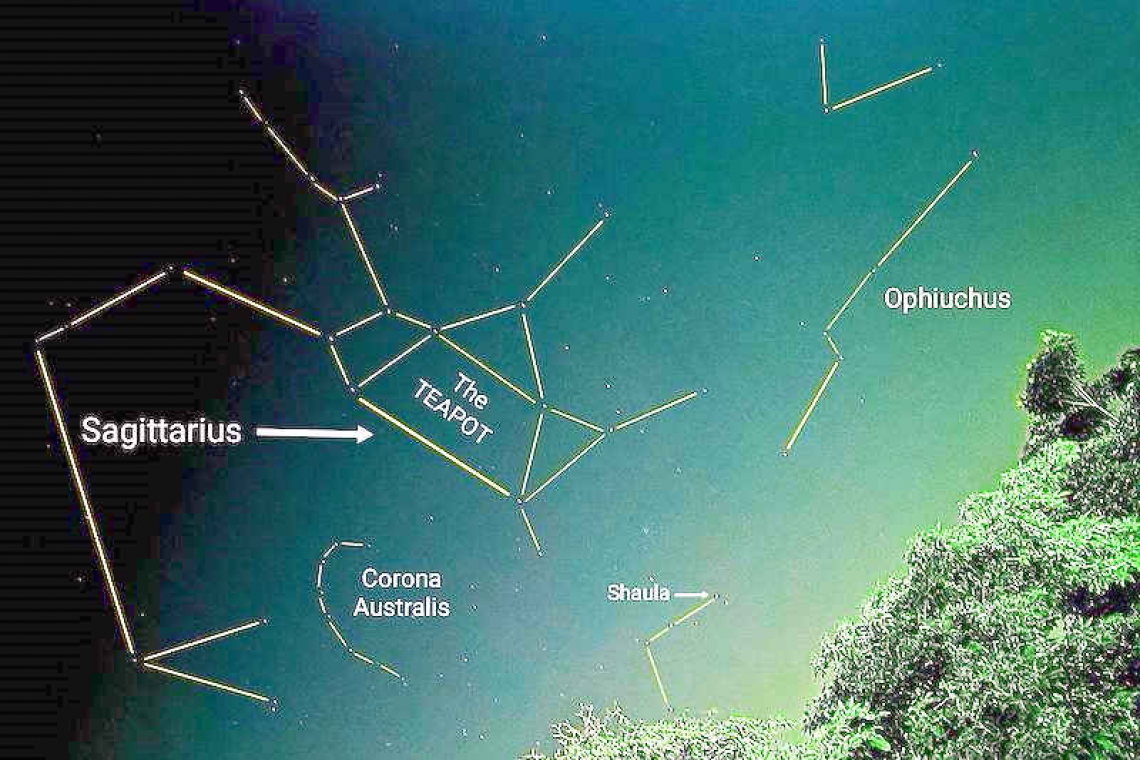~ St. Maarten’s Backyard Astronomy for July 2-4 ~
Sun rises at 5:40am
Sun sets at 6:51pm
Lunar phase: 4th quarter, waning crescent
Moon rises at 1:20am, Saturday
Moon sets at 1:24pm, Saturday
When you look at the starry sky at night, do you ever wonder if you are looking towards the centre of our galaxy? Recall that our galaxy, affectionately known as the Milky Way (the candy bar is named after it), is a huge swirl of stars, and our sun is just one of those stars. This weekend, let's find the right direction to gaze, to aim our imagination at the core of our local neighbourhood within the vast universe. The key is to locate the constellation Sagittarius, best viewed during the evening hours from about July to September.
Now Sagittarius is supposed to be a centaur, a mythical half-man / half-horse creature, aiming his bow and arrow perhaps in the direction of the constellation Scorpio – the giant celestial scorpion! But good luck spotting the centaur in the stars! The stars that make up Sagittarius are not the easiest to identify; but wait! There is a trick most of us use, it’s called the Teapot.
The Teapot is an asterism, or star pattern, within Sagittarius and, luckily, the Teapot is relatively very simple to find. Check out the sky map image included to get your bearings on what to look for. Do you see the Teapot? Well, then, you are seeing Sagittarius, and thus you are looking toward the centre of the Milky Way Galaxy!
What is at the centre of the Milky Way, you ask? Well, I can assure you it isn't nougat! In fact, we believe it’s a black hole, one of the most mysterious features known to exist out there in the universe. Black holes swirl tightly inward, like the core of a tornado. In a black hole, gravity is accelerated and nothing can escape once it has ventured within its field of influence, not even light itself – hence the name “black” hole. But have faith, our sun and its solar system are located out on a spiral band, a safe distance from the inner crunch zone.
The Milky Way is actually pretty easy to see if the moon is not too bright and if you can get far away from the lights of civilization. Mariners at sea and those camping far from cities can identify the Milky Way without missing a beat, but those of us near streetlights and building lights may have to use Sagittarius to show us the way.
How did this celestial feature come to have such a name? It goes back to the mythological stories of the ancient world. The zodiac and constellations generally owe their names to that era, when people thought different gods controlled different aspects of our daily lives. Zeus was the king of the gods, and his queen was Hera. She was thought to nourish all their children with the milky flow from her breasts, and so we honour that early understanding of our place in the universe, our humanity, and the mysteries of nature whenever we take the time to learn something new about the constellations in our night sky. Be blessed and keep looking up!
Thank you for keeping up with the Night Sky articles designed for St. Maarten viewing. If you are out later on in the week, each star rises about four minutes earlier each day than written here, and the moon rises 50 minutes later. Night Sky is researched and compiled by Lisa Davis-Burnett. Earthsky.org is a key resource for information and images. Questions or comments? Email This email address is being protected from spambots. You need JavaScript enabled to view it.







